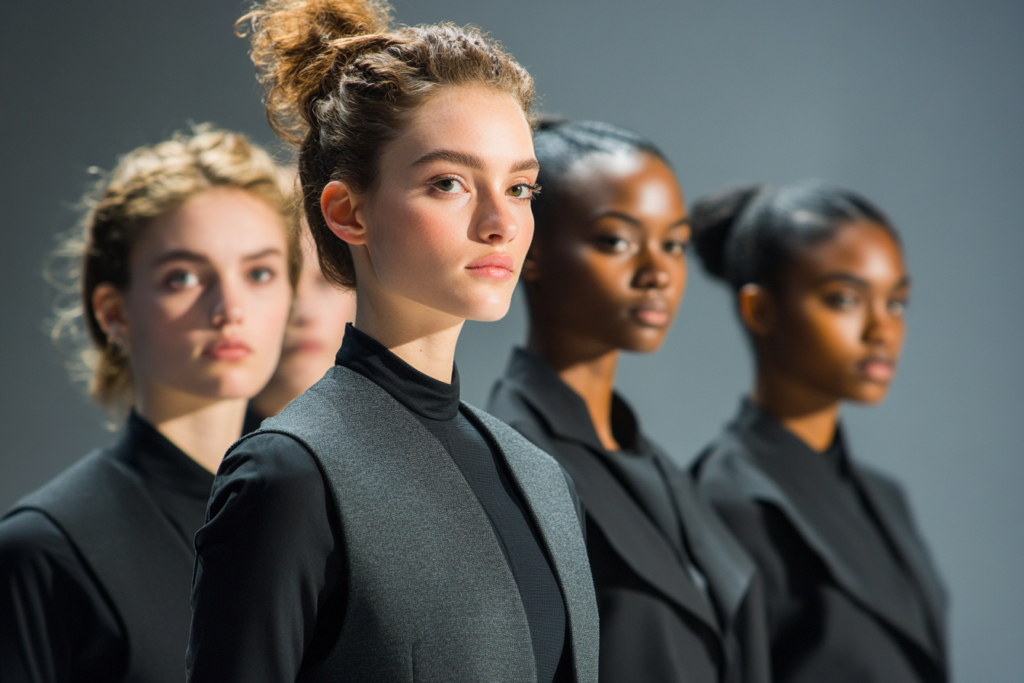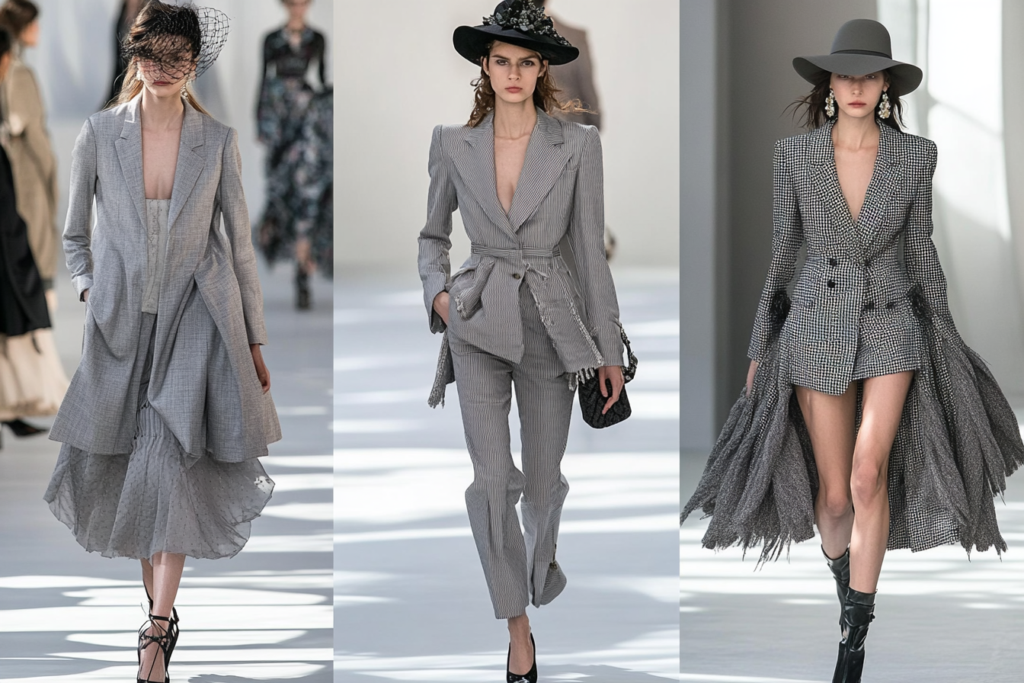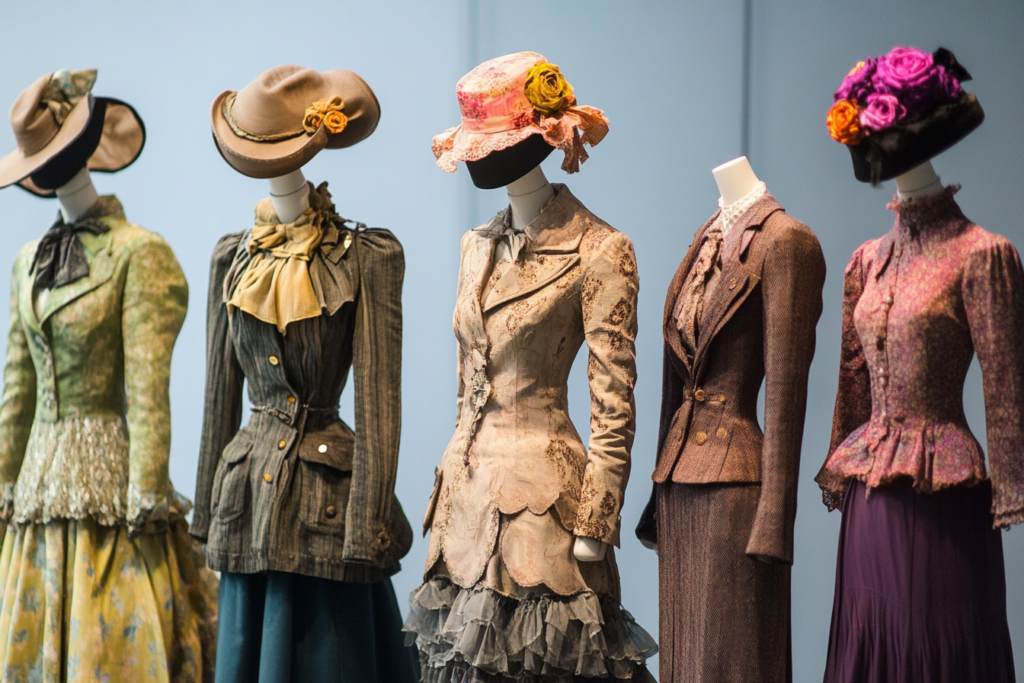Ready-to-Wear (RTW): Mass-Produced Fashion for Every Wardrobe
Meta Description: Ready-to-wear (RTW) clothing refers to mass-produced apparel made in standard sizes and ready to wear. It has become the dominant force in the global fashion industry. Discover more about RTW’s role and impact on modern fashion.
What is Ready-to-Wear (RTW)?
Ready-to-wear (RTW), also known as prêt-à-porter in French or moda pronto in Italian, refers to clothing that is manufactured in standardized sizes and made available for immediate purchase and wear. Unlike custom-made or haute couture garments, which are made to fit an individual’s specific measurements, RTW clothing is produced in bulk based on common sizing standards, making it accessible to a wide audience.
RTW accounts for the largest portion of the global clothing market, as it offers consumers a practical and affordable option for fashionable, everyday clothing. It’s designed to be ready for purchase off the rack, eliminating the need for time-consuming tailoring or adjustments.


Key Features of Ready-to-Wear Clothing:
- Standardized Sizing: RTW clothes are available in predefined sizes such as XS, S, M, L, and so on, making it easier for consumers to find items that fit them without the need for bespoke tailoring.
- Mass Production: RTW garments are produced in large quantities to meet consumer demand. This process allows brands to offer fashion trends at a lower price point compared to custom or high-end designer clothes.
- Variety and Versatility: Available in a wide range of styles, RTW includes everything from casual wear to formal attire, offering something for every occasion.
- Accessibility: Available in stores and online, RTW allows shoppers to purchase fashionable items quickly and easily, making it ideal for fast-paced lifestyles.
Why is Ready-to-Wear So Popular?
- Affordability
One of the main advantages of RTW clothing is that it’s much more affordable than couture or made-to-measure fashion. The economies of scale involved in mass production allow brands to keep prices lower, making fashionable clothing accessible to a broader range of consumers. - Convenience
RTW offers the convenience of being immediately available for purchase. Shoppers can find clothes in stores or online and wear them right away, without waiting for fittings or alterations. - Variety
The RTW industry spans countless styles, from high-end luxury brands to more budget-friendly options, ensuring that there’s something for everyone. The seasonal collections are designed to cater to diverse tastes and preferences, whether it’s casual, professional, or evening wear. - Time-Saving
For busy individuals, RTW clothing eliminates the need for time-consuming decisions about fabric, tailoring, and fit. You can simply pick out a garment and know that it will fit based on standardized sizes, saving both time and energy.
Where is Ready-to-Wear Used?
- Everyday Fashion
RTW is ubiquitous in daily life. Whether you’re heading to work, a casual outing, or a special event, you’ll find ready-to-wear pieces that suit your needs. Retailers from global fashion houses to local boutiques often feature RTW collections. - Workwear
For office workers, ready-to-wear collections often include business attire, such as suits, blouses, and trousers, offering professionals easy access to polished, stylish clothing. - Event Wear
Ready-to-wear also extends to more formal events, with many designers offering collections that cater to galas, weddings, and other celebrations.
Benefits and Drawbacks of Ready-to-Wear
Pros:
- Cost-Effective: RTW is more affordable than custom-made clothing, making it an attractive option for budget-conscious shoppers.
- Wide Availability: With large-scale production, RTW clothing is easily accessible in stores and online around the world.
- Quick and Convenient: No need to wait for custom fittings, alterations, or special orders; RTW is ready to go off the shelf.
Cons:
- Fit Limitations: Although RTW is available in standardized sizes, it may not fit every body type perfectly. Some shoppers may require alterations for an ideal fit.
- Limited Exclusivity: Since RTW garments are mass-produced, there’s a chance that others may have the same items in their wardrobe, reducing the sense of uniqueness.
- Trends Over Customization: RTW collections often follow broader fashion trends rather than offering personalized designs, which means style options can be limited for those seeking something more distinctive.
How Ready-to-Wear Revolutionized Fashion
Ready-to-wear clothing was a significant game-changer in the fashion industry, democratizing access to designer-inspired styles and allowing fashion to reach a global audience. Before RTW, high-end clothing was often the domain of the elite, with fashion houses producing custom-made garments for a select clientele. However, with the rise of RTW in the 20th century, the average consumer could now enjoy high-quality clothing designed by renowned fashion houses without the exorbitant prices of couture.
RTW and the Future of Fashion
The trend toward ready-to-wear clothing shows no signs of slowing down. With advances in digital technology, including 3D printing and AI-driven design, the future of RTW may see even more personalized fits and styles while maintaining its mass-production model. Sustainability concerns are also influencing RTW, with many brands exploring eco-friendly materials, local production methods, and waste-reduction practices to create fashion that aligns with both consumer demand and environmental responsibility.
Conclusion
Ready-to-wear (RTW) clothing has revolutionized the fashion industry by making stylish, mass-produced garments accessible and affordable to a global audience. With its standardized sizes, wide availability, and convenience, RTW continues to dominate the clothing market. Whether you’re shopping for casual wear or high-end fashion, RTW offers the perfect balance of affordability, variety, and style for today’s fast-paced world.



